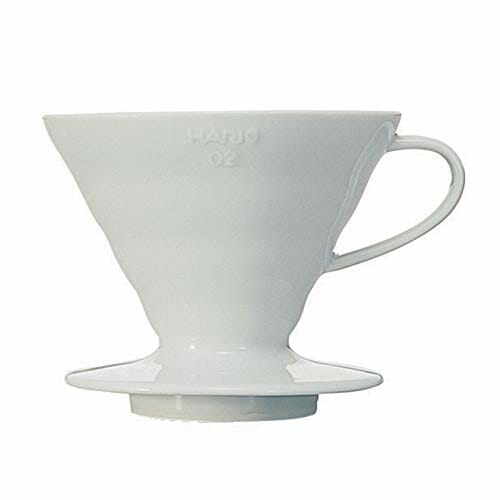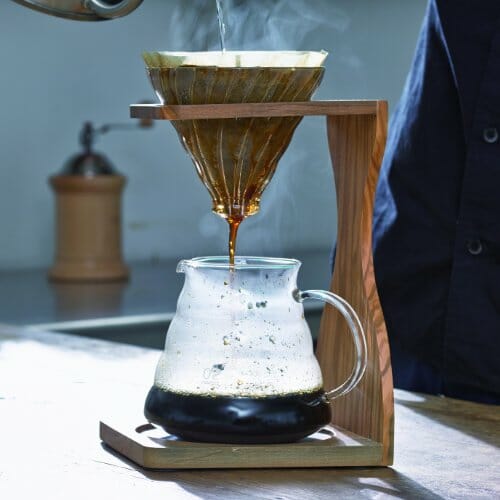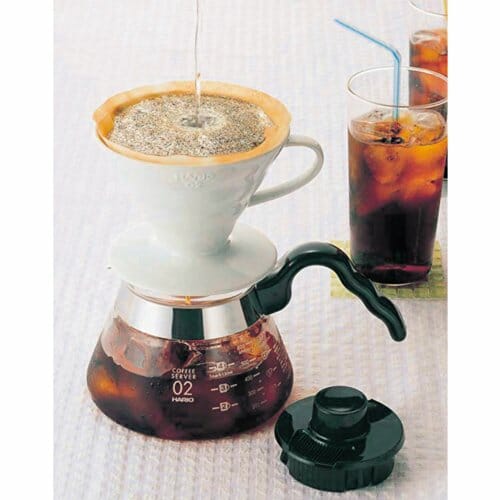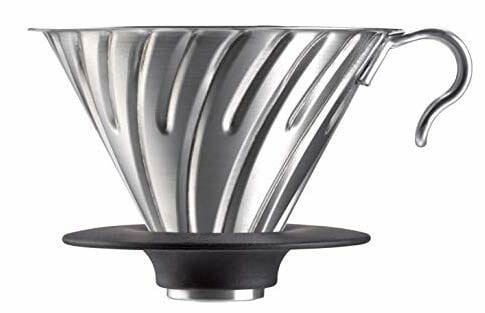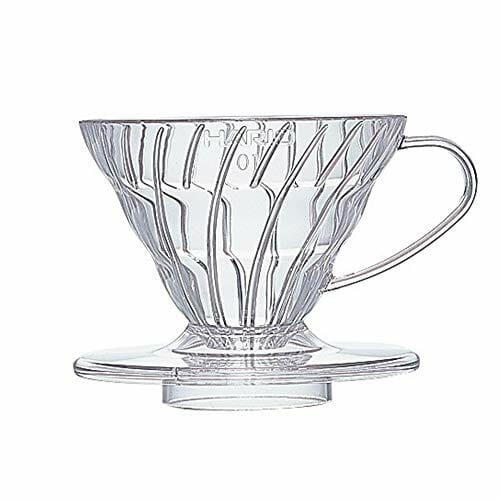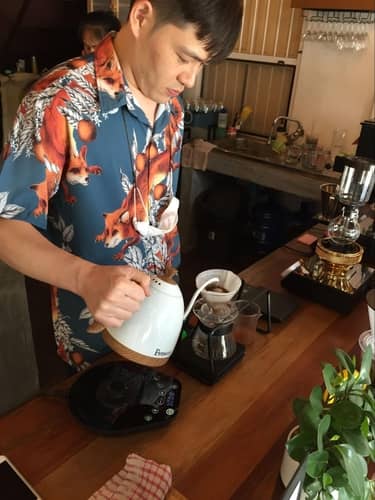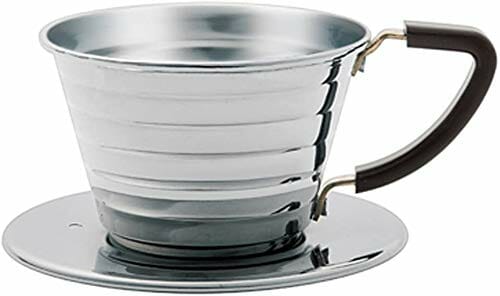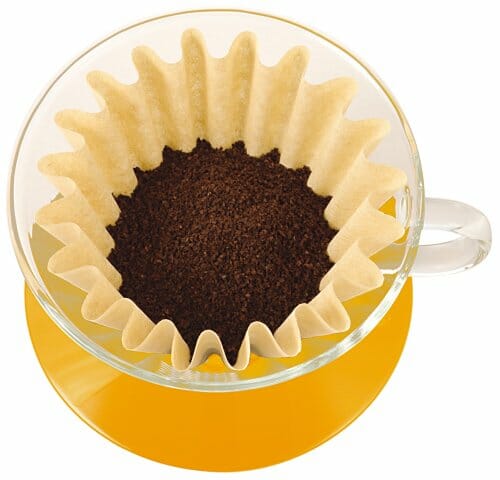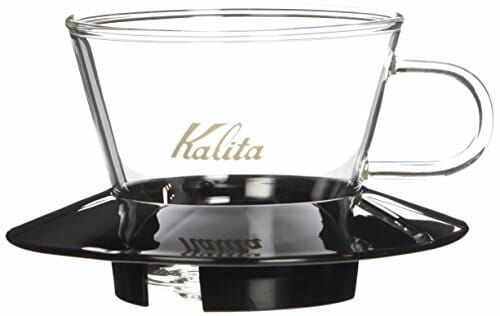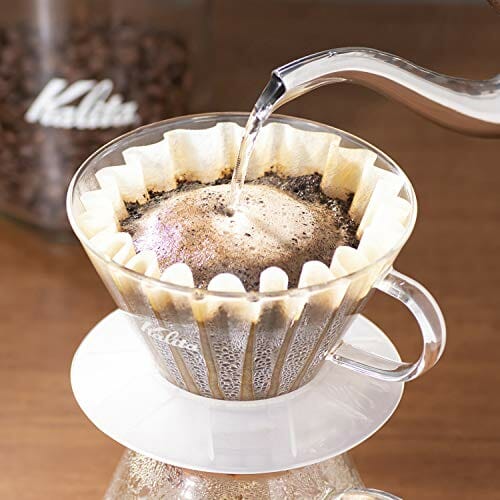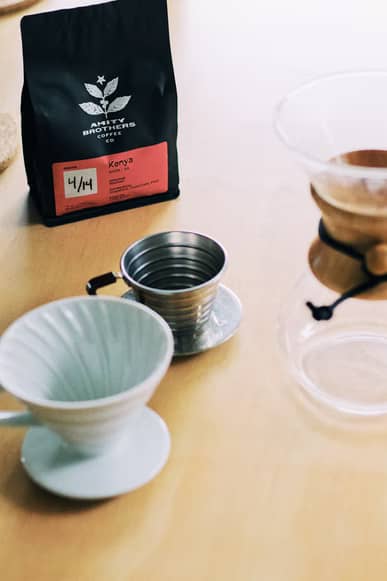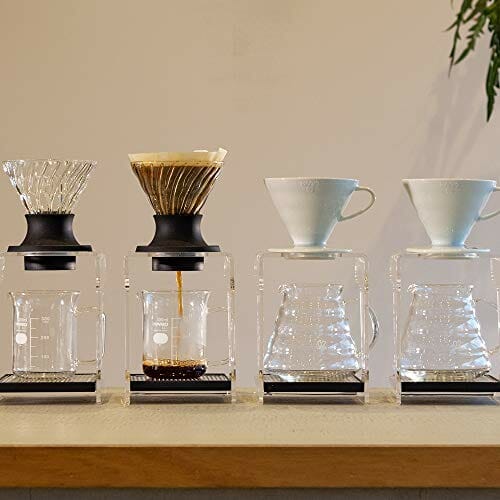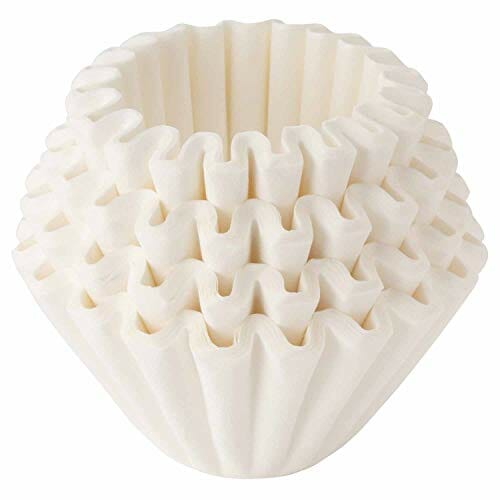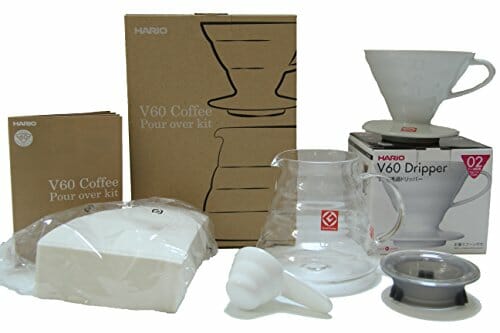The Pour-Over brew method is one of the best ways to make a bright cup of coffee like specialty coffee shops at home using affordable coffee equipment.
Some are full-on coffee makers, while some are just coffee drippers that need to work with a carafe or cup below to catch the extracted coffee.
And, in this article, we’ll discuss two brewing methods that belong to the 2nd kind, Hario V60 vs Kalita Wave.
You’ll learn about what to expect from each dripper, how exactly they can help you craft a flavorful cup, how to master them, and which is your cup of Joe.
- What Is Hario V60?
- How Does A Hario V60 Work?
- Which Hario Is Best?
- How Do You Do A V60 Step By Step?
- What Is Kalita Wave?
- How Does Kalita Wave Work?
- Which Kalita Wave Is The Best?
- How Do You Make Kalita Wave Coffee?
- What Is The Difference Between Kalita And V60?
- The Final Verdict – Is Kalita Wave Better Than V60?
What Is Hario V60?
Hario V60 is a manual device for brewing coffee Pour-Over style. It’s a dripper cone designed by a Japanese company, Hario, very recently, in 2004.
The initial idea of its iconic conical shape was an upgrade from the trapezoid-shaped coffee drippers dominating the Japanese coffee market in the 1980s.
The designers were trying to come up with a new dripper design that can produce a cleaner cup of Joe.
And finally, the Hario V60 was born featuring a signature V-shaped 60-degree angled coffee dripper, which is where the name comes from.
How Does A Hario V60 Work?
If you’re unfamiliar with Pour-Over coffee, let me give you a brief idea of how things work.
To make a delicious cup of Joe using the Pour-Over method, the barista needs to pour hot water slowly over the coffee bed which lies on top of a paper filter placed inside a dripper.
Water will come into contact with the ground coffee and the extracted coffee makes its way through the filter into the final carafe/cup.
And the same can be demonstrated on the Hario V60.
The 60-degree cone shape design of the Hario V60 optimizes the water flow rate for a longer brew time and more intensive coffee extraction.
The Hario V60 also stands out with spiral ribs on the inside surface of the dripper cone, which not only adds an extra aesthetically-pleasing touch but also serves a functional role.
To get more technical, the ribs add a little bit of space between the dripper and the coffee filters.
This extra room becomes useful when the coffee grounds expand and release gas as they “bloom“, resulting in a more flavorful brew.
What’s more, the large single-hole exit at the bottom enables a much better flow into the carafe or cup thanks to less restriction.
Which Hario Is Best?
Material
Did you know that there was more than 1 model of Hario V60? The device is available in 4 different materials.
Ceramic
The most popular version is ceramic. It’s heat resistant so no risk of potential build-ups of toxin chemicals or unfavorable flavor transfer.
This material has pretty high heat retention for a moderately consistent brew during the brewing process.
However, it also requires preheating initially due to how much heat the material absorbs.
This Hario V60 looks nice, feels nice, and is long-lasting as long as you treat it with care so that it doesn’t chip or break. But all of the pros also come at the expense of a higher price tag.
Glass
Another aesthetically pleasing option for your kitchen counter and The Gram is the glass version.
Generally, it’s pretty similar to the ceramic Hario V60, though it’s better at maintaining the brewer temperature during the brewing process compared to the popular “girl” thanks to the lower conductivity.
But, it’s the most vulnerable option out of them all.
Metal
The most durable and most expensive brewer is the metal version. You can get them in either copper or stainless steel.
Though these aren’t the most elegant-looking brewers, they can add a great steampunk-inspired industrial edge to your kitchen.
But, with great durability comes… bad performance? As we all learn in science class, metal makes a great conductor.
That means much of the heat from the water may escape as the material absorbs and takes it away. So you need to preheat the brewer very thoroughly.
Plastic
If you’re looking for ideal extraction of Pour-Over coffee, the final answer should be plastic due to its outstanding insulation capability. At first glance, who would have thought? Not me.
Though some might feel icky about plastic coming into contact with hot water, don’t worry. The brewer is made with BPA-free polypropylene plastic.
It’s also the most affordable option with great portability for those who travel a lot.
Which Hario V60 Size Is Best?
For personal consumption, size 01 should satisfy your caffeine cravings. It’s also the easiest to work with.
Size 02 can serve up to 4 cups at a time. But it has a taller rim so your pour may be less accurate. Some also find the drawdowns longer than usual, which affects the taste of the final cup and may lead to over-extraction.
If you’re brewing for many at a time, opt for size 03 which can make 6 cups.
How Do You Do A V60 Step By Step?
Coffee Grounds
Type of Coffee Beans
As one of the Pour-Over brewing styles, the Hario V60 should work with all types of good beans you have in mind.
But pay more attention to the single-origin specialty coffee as the Pour-Over brewing method is especially good at bringing out the exotically intricate flavor notes.
Roast
Hario V60 should work with all roast profiles. But I recommend going with light roasts as they can preserve more complex original coffee compounds that will pop off with the Pour-Over brew method.
Medium roasts are a universally safe choice as they offer a balanced brew in both taste and body.
Grind Size
According to my Coffee Grind Chart, the medium-fine grounds should work best for flavor extraction in the V60, but anywhere on the medium spectrum should work alright as well.
If the brew comes out too weak to your taste, opt for a finer grind and vice versa.
Water
The Golden Ratio (coffee-to-water) for making Pour-Over coffee is 1:17.
You can opt for 1:15 if you prefer your coffee stronger.
Make sure to prepare hot water beforehand.
The optimal water temperature for brewing coffee is between 195 – 205 degrees Fahrenheit (91 – 96 degrees Celsius).
And, how do you pour water in a V60?
The first pour is for coffee blooming. Pour just enough water to wet the grounds bed and wait 30 seconds to let the bed expand as the gas is released for better contact between coffee and water during the real brewing process.
For the second pour, the general technique is slowly pouring in a circular motion from the center to the edge and keep moving in and out to extract the flavors.
You may also incorporate the pulse pouring technique by adding only a small amount of water at a time.
To help you get the pouring angle and speed right, I strongly recommend investing in this gooseneck kettle which is optimally designed to make brewing Pour-Over coffee easier.
Instruction
- Step 1: Place the filter in place. Add some hot water to preheat the filter and the brewer. Discard the water afterward.
- Step 2: Add grounds and enough water to let it bloom for 30 seconds.
- Step 3: Pour water over the grounds for around 3 minutes to brew coffee.
What Is Kalita Wave?
Kalita Wave is also a Pour-Over coffee dripper. Similar to the V60 we’ve been discussing so far, it’s also capable of producing a clean cup of Joe that’s completely different from the full-bodied coffee that French Press and Clever Dripper brewers offer.
Kalita Wave was also invented by a Japanese company, Kalita, a long-standing family-owned business that specializes in making high-quality drip-based coffee-making equipment.
This dripper is well-known in the market for its extreme ease of use that’s optimized by the design of Kalita Wave and its special filter.
How Does Kalita Wave Work?
Since the Kalita Wave is also a member of the Pour-Over crowd, you can expect the extraction method to take the same route.
But, here’s how the design of the Kalita Wave dripper makes a difference.
The contact surface between the paper filter and the Kalita Wave is minimized thanks to the 20-wave filter design, enabling a better water flow at any angle and better consistency in water temperature for a more forgiving and consistent extraction of flavors.
What’s more, the infamous flat bottom of the Kalita Wave ensures that the grounds are distributed more evenly for a more uniform extraction.
The flat bottom also has three holes (smaller holes, to be exact) rather than just one singular hole, preventing water channeling during the Pour-Over brewing process to produce a crisp cup of good coffee.
Which Kalita Wave Is The Best?
Kalita Wave is also available in a range of materials – glass, porcelain, and metal (copper and stainless steel). You can draw the same conclusion from the comparison of versions of Hario V60 made from different materials.
Size-wise, the situation is also pretty similar to the V60’s.
The Kalita Wave 155 flat-bottom filter which can only accommodate a single cup of Joe is easier to brew with.
On the other hand, the 185, which can make 2-3 cups, gets clogged more likely.
How Do You Make Kalita Wave Coffee?
The grind size should be medium-coarse only slightly finer than sea salt if you keep up with our Ultimate Coffee Grind Chart.
Except for that, you can use the same coffee as our recommendation for the V60.
And here’s a brief Kalita Wave brewing guide:
- Step 1: Place the filter in place. Add some hot water to preheat the filter and the brewer. Discard the water afterward.
- Step 2: Add grounds and enough water to let it bloom for 30 seconds.
- Step 3: Pour half of the rest of the water in a circular motion for the next 30 seconds. Wait for around 20 – 30 seconds.
- Step 4: Pour the remaining water in the next 30 seconds and wait until the coffee drips through entirely to serve. You can also divide this portion into 3 pours with a 10-second interval.
And don’t forget to use a gooseneck kettle!
What Is The Difference Between Kalita And V60?
Brew Time
How long should a V60 take? The brewing alone takes roughly 3 – 4 minutes. But you do need around 10 minutes more to heat water and grind the beans. So the entire process can take 14 minutes at most.
And, how long should a Kalita Pour-Over take? The brewing process can take a bit faster, only 2.5 – 3 minutes.
Coupling that with the 10-minute preparation, you should spend around 13 minutes on your morning coffee routine.
Overall, not much of a difference between the 2 devices.
Taste
Since they’re both Pour-Over drippers, homebrewers can enjoy clean and smooth coffee with distinctly clear coffee notes, especially if you use lighter roasts.
But, the flat bottom and its three holes on the Kalita Wave result in an especially crisp cup of Joe.
The minimal contact between the dripper and the filter also contributes to a much more even extraction due to less fluctuating water temperature throughout the process.
Ease Of Use
In this round of Hario V60 vs Kalita Wave, the latter should win for its consistency. It’s a great Pour-Over device for beginners to get to know the world of third-wave coffee.
Nevertheless, both call for a learning curve to master the craft of pouring.
Portability
You can easily find portable options for both brewers – metal and plastic for V60 and metal for Wave.
Cost
They’re in the same affordable price range, which is less than $50. But keep in mind that the Wave is more suitable for single coffee drinkers as their offered sizes are smaller than V60’s.
And don’t forget that the Wave requires its own signature Wave filters to work, which are more than double the price of regular filters that V60 utilizes.
Fun fact: You can use Kalita filters in V60, though the flow rate will be accelerated.
The Final Verdict – Is Kalita Wave Better Than V60?
To be honest, they aren’t super different from each other. But, if I have to choose, as a coffee aficionado, Hario V60 offers more brewing versatility in terms of technique due to its less forgiving nature. You can read more on it here.
And the Kalita Wave serves better as a beginner-friendly Pour-Over device thanks to its ease of use.

![Hario V60 vs Kalita Wave: Which Brews Better? [Comparison] 2 Hario V60 vs Kalita Wave](https://coffeegeek.tv/wp-content/uploads/2021/12/Hario-V60-vs-Kalita-Wave-1024x536.jpg)
